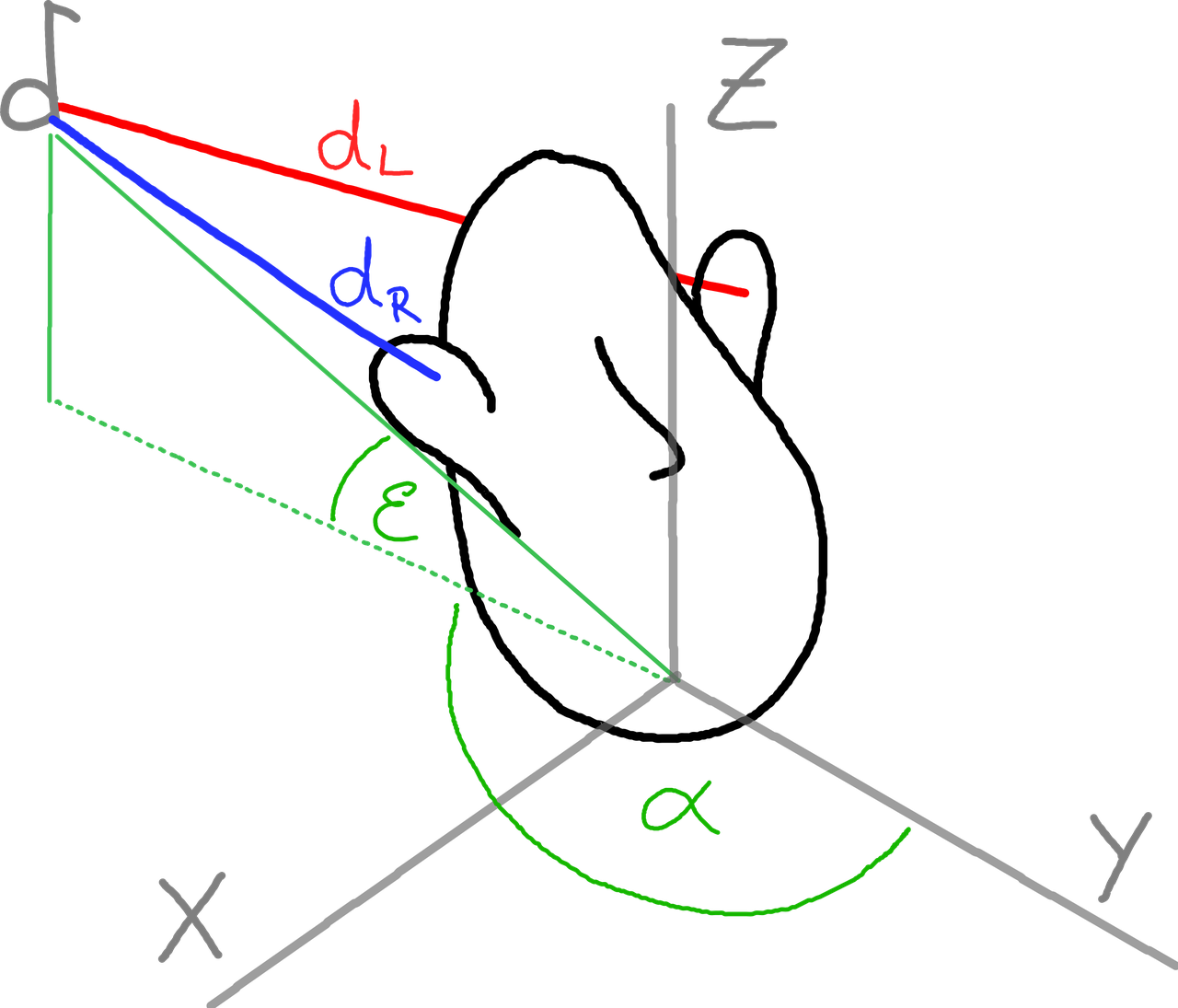Binaural Introduction
Binaural Listening
Two-ear (binaural) listening encodes information on the direction and distance of a sound source by several cues. Figure 1 shows a listener with a sound source and its properties azimuth elevation and distance.
Interaural cues are based on the signal of both ears, more precisely their differences. They are in particular relevant for the horizontal Localization, respectively the azimuth:
interaural time differences (medium frequencies)
interaural level differences (high frequencies)
interaural phase differences (low frequencies)
In addition to the interaural cues, the coloration gives information on the elevation of a sound source, as well as on opposing azimuth angles which have identical interaural cues.

Figure 1: Sound source with angles and distances to left and right ear.
Binaural Recording Technology
Dummy Head
Dummy Head recordings use the principles of binaural listening with two microphones and a model head, carrying these microphones at the position of the ear drum.
When the dummy head is placed in any environment, it listens and records the signals of both ears to two channels.
Many binaural records were released during the 1970s, yet without larger success.
In Ear Microphones
With the increased use of in ear headphones and streaming, binaural techniques became more and more popular in the 2010s. ASMR artists, for example, use close-up binaural recordings to create intimate
HRTF Generation
Individual
Generic
Binaural Room Impulse Responses
References
1993
- Elizabeth M Wenzel, Marianne Arruda, Doris J Kistler, and Frederic L Wightman.
Localization using nonindividualized head-related transfer functions.
The Journal of the Acoustical Society of America, 94(1):111–123, 1993.
[details] [BibTeX▼]
1992
- Henrik Møller.
Fundamentals of binaural technology.
Applied acoustics, 36(3-4):171–218, 1992.
[details] [BibTeX▼]
